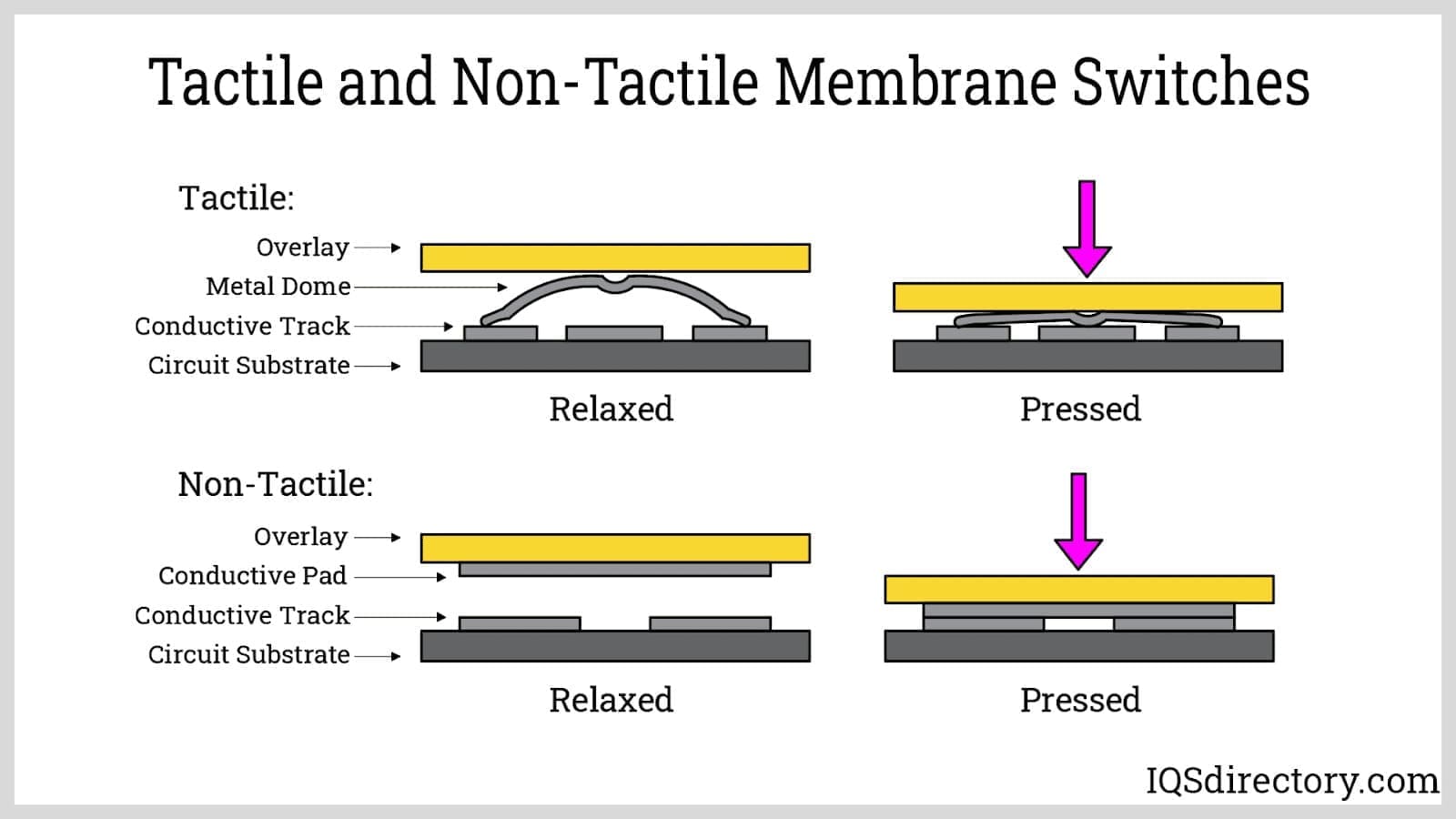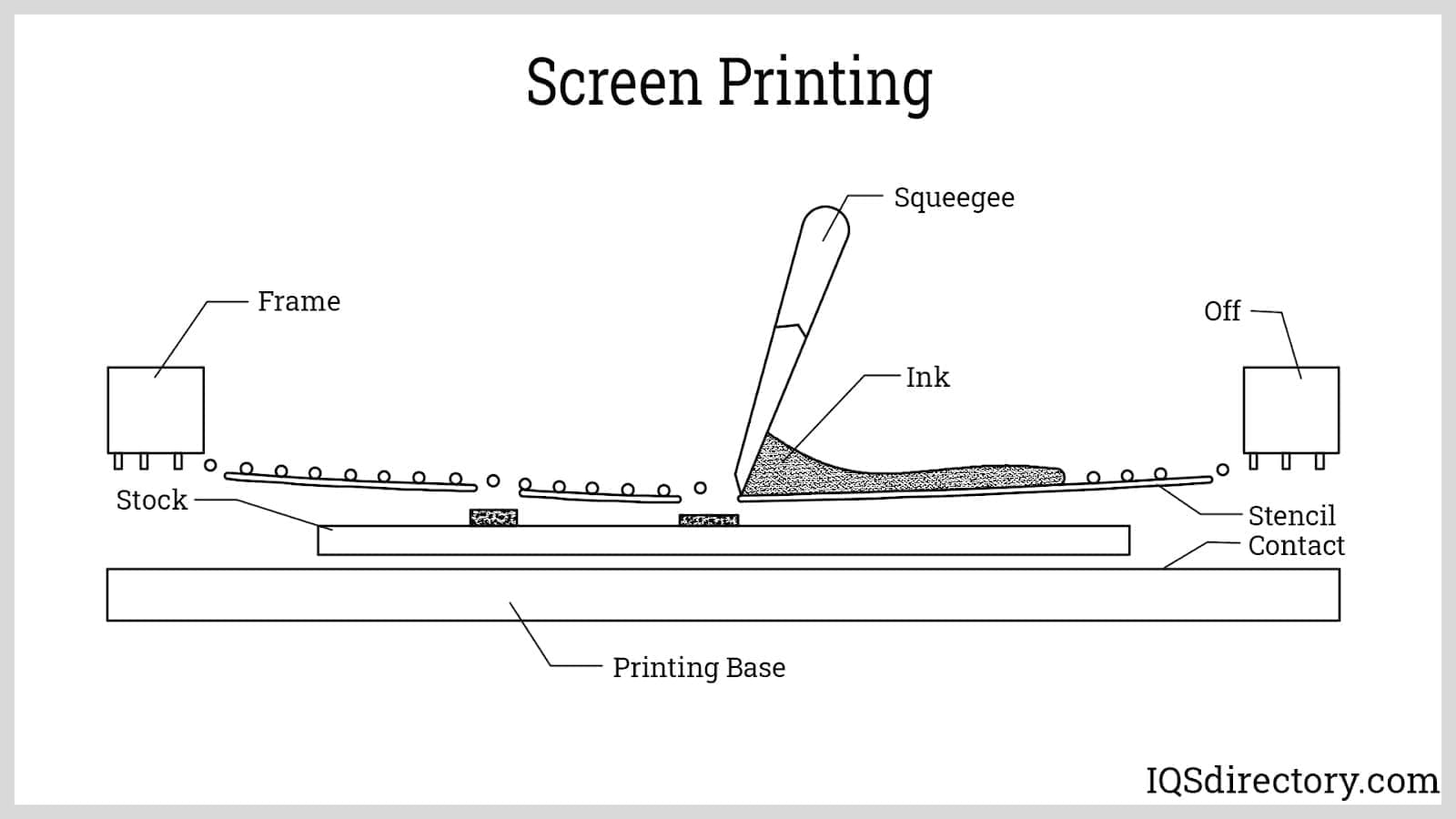The Production Process Behind Membrane Layer Change: What You Required to Know
The manufacturing procedure behind membrane changes combines careful layout, material option, and quality assurance. It starts with understanding the ins and outs of membrane switch design and progresses through different phases, consisting of product selections and printing techniques. Each phase plays an important duty in ensuring performance and durability. Nevertheless, the complexities of layer building and construction and the rigorous testing requirements might reveal insights that are not instantly obvious. What lies past these fundamental components?
Understanding Membrane Switch Style
Although membrane switches may appear basic at initial glance, their design involves intricate considerations that ensure performance and longevity. The layout procedure starts with a thorough understanding of user needs, consisting of the user interface's desired application and ecological factors. Comfort designs is a crucial element, as the design has to help with convenience of use while making sure that responsive feedback satisfies individual expectations.Moreover, the layering of parts, such as visuals overlays, glue layers, and conductive traces, have to be exactly engineered. membrane switch. This layered arrangement not just influences the switch's responsiveness yet likewise impacts its longevity. Focus is provided to the securing methods employed to shield versus moisture and dirt, which might compromise efficiency. Additionally, style considerations encompass aesthetics, where color pattern and visual quality boost individual experience. Ultimately, the layout of membrane switches equilibriums functionality, customer experience, and toughness, guaranteeing that they meet the needs of various applications properly
Materials Made Use Of in Membrane Switch Over Manufacturing
When picking materials for membrane layer switch production, it is important to ponder both performance and longevity. The primary products include polyester and polycarbonate movies, which provide adaptability and toughness. These films are often covered with sticky to ensure appropriate bonding to substratums. Conductive inks, generally made up of silver or carbon, are critical for developing electrical connections within the button, allowing for trustworthy operation.Additionally, a safety layer, such as a hard coat, is regularly put on boost scratch resistance and durability. The selection of backing product, such as acrylic or foam, can considerably affect the button's responsive feel and general customer experience. Numerous ecological variables, consisting of temperature and humidity, ought to direct product choice to assure peak performance in particular applications. Eventually, the ideal mix of products adds to the membrane layer button's functionality and lifespan, making informed choices vital for makers.
The Printing Process: Creating Graphics and Text
The printing process in membrane switch manufacturing plays a significant role in producing high-quality graphics and text. Numerous visuals layout methods are used to ensure visual appeal and functionality, while careful ink option approaches are necessary for longevity and efficiency. Comprehending these aspects is fundamental for achieving ideal cause membrane switch layout.
Graphic Style Techniques
Graphic design methods play a crucial function in the printing process of membrane layer buttons, as they define just how graphics and text will inevitably appear on the end product. Reliable graphic layout involves the critical use colors, layouts, and font styles to boost readability and visual allure. Designers commonly use vector graphics for scalability, ensuring that pictures continue to be sharp at various dimensions. In addition, interest to comparison and alignment is important, as it affects user interaction and visual quality. The consolidation of branding components, such as logo designs, should be managed with treatment to maintain brand stability. On the whole, thoughtful graphic style methods add substantially to the functionality and appearance of membrane layer buttons, impacting individual experience and product efficiency.
Ink Option Approaches
Selecting the appropriate ink is vital for attaining the wanted aesthetic quality and sturdiness in membrane layer button manufacturing. Different ink kinds are used, including solvent-based, water-based, and UV-curable inks. Each kind supplies unique attributes, such as resistance, attachment, and adaptability to environmental factors. Solvent-based inks are commonly preferred for their longevity and vivid shades, while water-based inks are a lot more eco pleasant however might have restrictions in bond. UV-curable inks offer rapid curing and durable efficiency. Additionally, color matching strategies ensure that the chosen inks align with layout requirements. Eventually, the choice of ink must think about elements such as application method, substratum compatibility, and end-use demands to achieve superior outcomes in membrane switch graphics and message.
Layer Building And Construction and Setting Up

Product Option Refine
A mindful option of products is essential in the manufacturing procedure of membrane switches, as it directly affects functionality and toughness. The key products utilized include polyester, polycarbonate, and different conductive inks. Polyester is typically preferred for its exceptional resistance to chemicals and abrasion, making it appropriate for extreme atmospheres. Polycarbonate, on the other hand, offers exceptional clarity and impact resistance, which is beneficial for applications needing exposure and toughness. Conductive inks, generally composed of silver or carbon, are vital for developing trustworthy electric pathways. Additionally, the selection of glue products affects the overall honesty of the button - membrane switch. Assessing factors such as ecological direct exposure, tactile comments, and visual demands guides suppliers in choosing the very best products for their particular applications
Layer Adhesion Strategies
Adhering layers in membrane button building and construction is an important process that ensures functionality and long life. Different attachment methods are employed to protect suitable bonding in between layers, which generally include making use of adhesives, heat, and stress. Pressure-sensitive adhesives (PSAs) are typically made use of for their simplicity of application and immediate bonding capacities. Additionally, thermal bonding strategies can be applied, where warm is used to trigger glue residential properties, securing a solid bond. The option of attachment method mainly relies on the materials included and the specific application demands of the membrane layer switch. Appropriate positioning and consistent application of adhesives are necessary to stop defects, protecting the button runs efficiently throughout its designated life-span.
Quality Control Procedures
Guaranteeing quality assurance during the layer building and construction and setting up of membrane switches is vital for keeping efficiency and integrity. This process usually includes several important steps, including complete examinations at each phase of manufacturing. Producers use sophisticated screening methods, such as peel examinations and attachment evaluations, to validate the integrity of layer bonds. Additionally, aesthetic assessments are carried out to identify any kind of defects in printing or product incongruities. Environmental conditions, such as temperature level and moisture, are thoroughly kept track of to assure ideal healing and bond. Routine calibration of tools aids maintain precise manufacturing standards. By carrying out these top quality control measures, suppliers can significantly reduce the danger of product failure, guaranteeing that the last membrane switches satisfy the needed requirements and client expectations.
Evaluating and Quality Assurance Actions

Technologies in Membrane Switch Innovation
As innovations in innovation continue to progress, membrane switches are gaining from cutting-edge growths that enhance their performance and customer experience. One remarkable advancement is the integration of capacitive touch innovation, which enables for even more responsive and intuitive interface. This change not only improves looks yet additionally lowers mechanical wear and tear, extending the life expectancy of the switches.Additionally, developments in graphic overlay materials have brought about improved durability and resistance to environmental factors such as moisture and UV light. These materials now offer enhanced clarity and brightness, additional boosting the visual appeal.Furthermore, the consolidation of wise innovation is changing membrane layer switches into interactive control panels, making it possible for connection with IoT websites gadgets. This connection cultivates a seamless customer experience, leading the way for applications in different markets, from medical care to customer electronic devices. Jointly, these developments placement membrane switches over as critical parts in modern device layout.
Frequently Asked Questions
For how long Does the Membrane Switch Over Manufacturing Refine Take?
The duration of the membrane layer button manufacturing procedure can differ considerably. Elements such as intricacy, products used, and manufacturing quantity impact timelines, with regular production varying from a couple of days to a number of weeks for conclusion.
What Are the Common Applications for Membrane Buttons?
Membrane switches are commonly utilized in numerous markets, including automobile controls, family appliances, clinical tools, and customer electronic devices (membrane switch). Their versatility and toughness make them suitable for applications requiring user-friendly interfaces and trustworthy efficiency in diverse atmospheres
Can Membrane Layer Switches Be Personalized for Specific Needs?

What Is the Lifespan of a Typical Membrane Switch Over?
The life-span of a typical membrane button varies, but normally, it varies from 1 to 5 million cycles. Aspects such as use, atmosphere, and worldly top quality significantly affect longevity and general performance over time.

Are Membrane Switches Ecologically Friendly?
The environmental kindness of membrane changes varies. Some products utilized may not be recyclable, while others can be environmentally friendly. The total impact depends on producing techniques and products, necessitating cautious factor to consider throughout selection and disposal. The manufacturing procedure behind membrane changes combines cautious layout, material option, and top quality control. It starts with comprehending the details of membrane button design and progresses with various stages, including product selections and printing techniques. When picking products for membrane switch production, it is vital to contemplate both performance and sturdiness. A careful selection of materials is crucial in the manufacturing process of membrane layer buttons, as it directly influences capability and sturdiness. The option of attachment method mostly depends on the materials involved and the details application needs of the membrane switch.